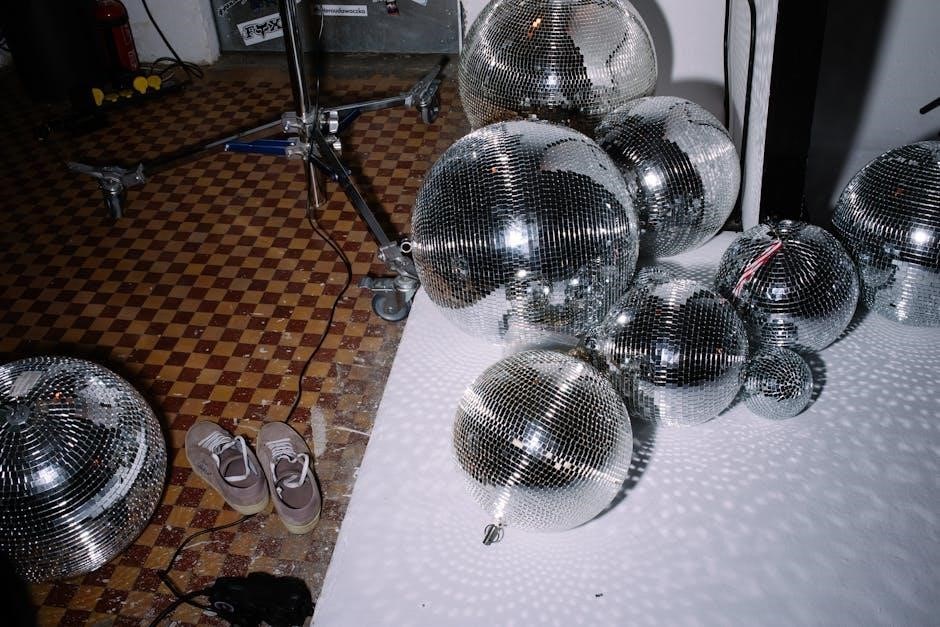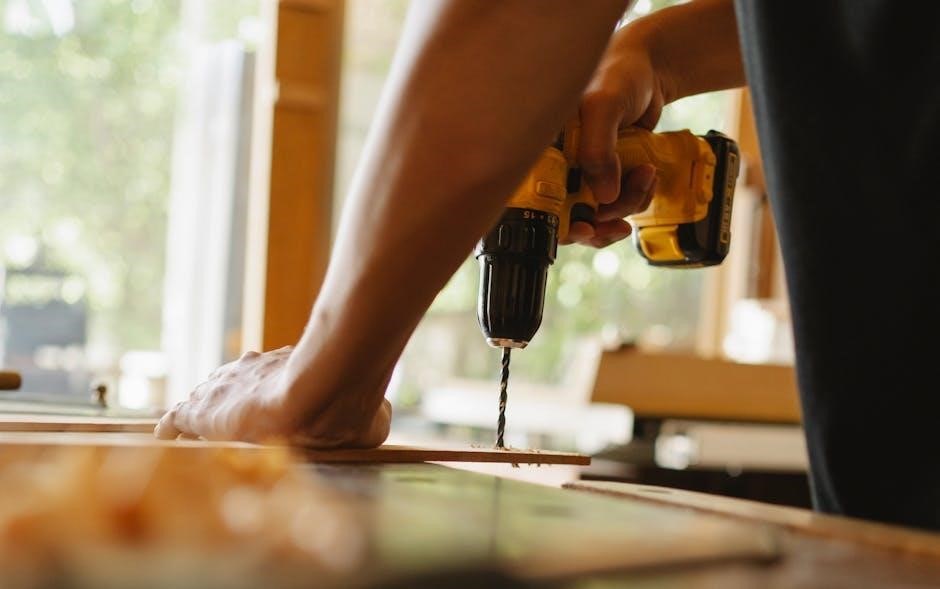honeywell 8000 thermostat installation guide
Honeywell TH8000 Thermostat Installation Guide
This comprehensive guide provides step-by-step instructions for installing your Honeywell VisionPRO TH8000 series touchscreen programmable thermostat․ Carefully follow these instructions to ensure proper installation, optimal performance, and to avoid any potential hazards during the process․
Preparation Before Installation
Before you begin the installation of your Honeywell TH8000 thermostat, thorough preparation is crucial․ Start by carefully reading the entire installation manual and operating manual․ This familiarizes you with all the necessary steps and safety precautions․ Ensure you have all the required tools readily available, such as a screwdriver, wire stripper, and level․
Next, identify the type of heating and cooling system you have․ This information is important when wiring the new thermostat․ Check the voltage of your system; the TH8000 is designed for standard voltage systems․ Gather accessories and replacement parts if needed․ Note the date code, as it may be required for installer setup options․
Finally, consider any local rebates offered for installing energy-saving thermostats․ Verify the operating ambient temperature is within the TH8000’s range (0F to 120F)․ This preparation will streamline the installation process and ensure a successful setup of your new thermostat․
Safety Precautions
Prioritizing safety is paramount before starting any electrical work, including the installation of your Honeywell TH8000 thermostat․ Always disconnect power to the heating and cooling system at the circuit breaker or fuse box before beginning the installation process․ This prevents electrical shock and potential damage to the equipment․ Double-check that the power is off before proceeding․
If you are not comfortable working with electrical wiring, it is strongly recommended to hire a trained and experienced technician to perform the installation․ Improper wiring can lead to system malfunctions, fire hazards, or personal injury․ Read these instructions carefully․ Failure to follow these safety precautions could result in serious harm․
Ensure that all wiring complies with local electrical codes and regulations․ Never work on electrical components in damp or wet conditions․ Keep children and pets away from the work area to prevent accidents․ Take your time and work methodically to ensure a safe and successful installation․
Disconnecting Power
Before you even think about touching a wire or tool, the absolute first step in installing your Honeywell TH8000 thermostat is to completely disconnect power to your heating and cooling system․ This isn’t just a suggestion; it’s a critical safety measure that protects you from potentially lethal electrical shock and prevents damage to your HVAC equipment․ Locate the circuit breaker or fuse that controls your furnace or air conditioner․

Flip the breaker to the “off” position or remove the fuse․ To be absolutely sure, you can use a non-contact voltage tester to verify that there is no power running to the thermostat wires․ Place the tester near the wires, and if it lights up or beeps, it means there’s still power present․ In that case, double-check that you’ve turned off the correct breaker or removed the correct fuse․
Once you’re certain that the power is off, you can proceed with the next steps of the installation process with confidence․ Never skip this crucial step!
Tools Required
To ensure a smooth and successful installation of your Honeywell TH8000 thermostat, gathering the necessary tools beforehand is essential․ First and foremost, you’ll need a screwdriver set, including both Phillips head and flathead screwdrivers of various sizes․ These will be used to loosen and tighten screws on the old and new thermostats, as well as the wallplate․
A wire stripper is also crucial for safely removing the insulation from the thermostat wires without damaging the conductors․ Pliers can be helpful for bending or straightening wires, ensuring a secure connection․ A level is important to make sure the new thermostat is mounted straight on the wall, enhancing its appearance․
You’ll also need a pencil for marking the location of mounting holes and labeling wires․ Finally, having a flashlight or work light on hand can be beneficial, especially if you’re working in a dimly lit area․ With these tools at your disposal, you’ll be well-equipped to tackle the installation process․

Installation Process
The installation process involves several key steps, including removing the old thermostat, identifying and labeling wires, installing the new wallplate, and wiring the new Honeywell TH8000 thermostat․ Follow each step carefully for a successful installation․
Removing the Old Thermostat
Before you begin removing the old thermostat, ensure that the power to your heating and cooling system is completely disconnected․ This is a crucial safety precaution to prevent electrical shock or damage to the system during the removal process․ Locate the circuit breaker that controls the thermostat and switch it to the “off” position․
Once the power is disconnected, carefully remove the cover of the old thermostat․ Depending on the model, this may involve unscrewing it, unclipping it, or gently pulling it off․ After removing the cover, you will see the wiring connections․ Before disconnecting any wires, take a clear picture of the existing wiring configuration․
This photo will serve as a valuable reference when wiring the new Honeywell TH8000 thermostat․ Next, carefully disconnect each wire from the old thermostat․ Use a small screwdriver to loosen the screws that hold the wires in place․ As you disconnect each wire, label it with a piece of masking tape and a pen, noting the terminal it was connected to․ This labeling process is essential for accurate wiring of the new thermostat․

Identifying and Labeling Wires
Accurately identifying and labeling the wires connected to your old thermostat is a critical step in ensuring a successful installation of your Honeywell TH8000․ This process will prevent wiring errors that could potentially damage your heating and cooling system․ Begin by carefully examining the wires and noting their colors․ Common wire colors include red, white, yellow, green, and blue, but variations can occur․
Refer to the wiring diagram of your old thermostat, if available․ This diagram will show the function of each wire and the corresponding terminal it should be connected to․ Match the wire colors to the terminals on the old thermostat and label each wire accordingly․ For example, the red wire connected to the “Rh” terminal should be labeled “Rh․”
If you don’t have a wiring diagram, consult the documentation for your old thermostat or contact a qualified HVAC technician for assistance․ It’s important to note the presence of any jumper wires, which are short wires connecting two terminals․ These jumpers may need to be reinstalled on the new thermostat, depending on your system configuration․ Take a clear picture of the wiring before disconnecting anything․
Installing the Wallplate
After removing the old thermostat and properly labeling the wires, the next step is to install the wallplate for your new Honeywell TH8000 thermostat․ The wallplate provides a secure mounting surface for the thermostat and ensures proper alignment․ Position the wallplate on the wall where the old thermostat was located, making sure it covers any existing holes or marks left behind․
Use a level to ensure the wallplate is perfectly horizontal․ This is important for the aesthetic appeal of the installation and to ensure the thermostat functions correctly․ Once the wallplate is level, mark the locations for the mounting screws using a pencil․ If necessary, use the provided anchors for added support, especially if you are mounting the wallplate to drywall․ Drill pilot holes at the marked locations before inserting the screws․
Carefully align the wallplate with the pilot holes and secure it to the wall using the provided screws․ Tighten the screws until the wallplate is firmly attached but avoid overtightening, which could damage the wall or the wallplate․ Once the wallplate is securely mounted, proceed to the next step of wiring the new thermostat․
Wiring the New Thermostat
With the wallplate securely installed, you can now proceed to wiring the new Honeywell TH8000 thermostat․ Carefully refer to the wiring diagram that you created when you labeled the wires from your old thermostat․ Match each wire to the corresponding terminal on the back of the TH8000 thermostat․ Ensure that each wire is securely connected to the terminal by gently tightening the screw․
Double-check all wiring connections to ensure accuracy․ Incorrect wiring can damage the thermostat or your heating/cooling system․ Pay close attention to the common wire (usually blue), as it is essential for the thermostat to function correctly․ If you are unsure about any of the wiring connections, consult a qualified HVAC technician for assistance․ Once all the wires are securely connected, carefully tuck any excess wire back into the wall․
Align the TH8000 thermostat with the wallplate and gently press it into place until it snaps securely․ Ensure that the thermostat is firmly attached to the wallplate․ After the thermostat is mounted, restore power to your heating/cooling system and proceed to the configuration and setup process․

Configuration and Setup
After installation, configure your Honeywell TH8000․ Power on the thermostat and access installer setup options using the date code․ Set date, time, and test the system․ Consult the manual for specific settings․
Powering On the Thermostat
Once the wiring is securely connected and the thermostat is properly mounted on the wallplate, it’s time to power on your Honeywell TH8000 thermostat․ Ensure that the batteries (if applicable to your model) are correctly installed․ After confirming the battery placement or direct wiring is complete, gently slide the thermostat body onto the wallplate, ensuring a firm and secure connection․
The thermostat should automatically power on․ If it doesn’t, double-check the wiring connections and battery installation․ A successful power-on will typically display the Honeywell logo or a welcome screen on the touchscreen interface․ If the screen remains blank, consult the troubleshooting section of the user manual or retrace your wiring steps to verify each connection’s accuracy․
Upon initial power-up, the thermostat may prompt you to select your preferred language and begin the initial setup process․ Follow the on-screen prompts to configure basic settings such as date, time, and your location․ These initial settings are crucial for the thermostat to accurately manage your heating and cooling system according to your desired schedule and preferences․
Installer Setup Options (Date Code Access)
The Honeywell TH8000 thermostat includes advanced installer setup options accessible via a date code․ These settings allow professionals to fine-tune the thermostat’s operation to match the specific heating and cooling system it controls․ To access these options, navigate to the main menu on the touchscreen and select “Installer Options․” The thermostat will prompt you for a password, which is the current date code․
The date code is essential for gaining entry to these advanced settings․ Once you’ve entered the correct date code, you’ll gain access to parameters such as cycle rates, staging configurations, and other system-specific settings․ Modifying these settings requires a thorough understanding of HVAC systems to prevent improper operation or damage․
Within the installer setup menu, carefully review each option and its potential impact on system performance before making any changes․ Refer to the Honeywell TH8000 installation manual for detailed explanations of each setting and recommended values for different system types․ Incorrect settings can lead to inefficient operation, temperature inconsistencies, or even equipment damage, so proceed with caution and consult a qualified HVAC technician if needed․
Setting the Date and Time
After powering on your Honeywell TH8000 thermostat, setting the correct date and time is crucial for accurate scheduling and optimal performance․ The thermostat uses this information to execute programmed temperature changes according to your desired schedule․ To set the date and time, begin by pressing the “Menu” button on the touchscreen display․ From the menu options, select “Set Date/Time․”
The thermostat will then guide you through the process of setting the month, day, year, and current time․ Use the up and down arrow buttons on the screen to adjust each value accordingly․ Ensure that you select the correct AM or PM designation for the time to avoid scheduling errors․ Once you have entered all the correct information, press the “Done” or “Save” button to confirm your settings․
Verify that the date and time displayed on the thermostat’s main screen are accurate․ If the time is off by even a few minutes, it can disrupt your programmed schedule and affect your comfort levels․ Regularly check the date and time, especially after a power outage, as the thermostat’s internal clock may need to be reset to maintain accurate scheduling․ Proper date and time settings ensure efficient energy usage and consistent comfort throughout your home․
Testing the System
After completing the installation and initial configuration of your Honeywell TH8000 thermostat, it’s essential to thoroughly test the system to ensure everything is functioning correctly․ This testing process verifies that the thermostat is communicating effectively with your heating and cooling equipment, and that the temperature settings are being accurately maintained․ Begin by manually adjusting the thermostat to a temperature significantly higher than the current room temperature to activate the cooling system․ Listen for the cooling unit to turn on and verify that cold air is circulating through the vents․
Next, lower the thermostat setting to a temperature significantly below the current room temperature to activate the heating system․ Again, listen for the heating unit to engage and confirm that warm air is being distributed throughout the space․ Allow ample time, several minutes, for each system to respond․ If either the heating or cooling system fails to activate, double-check the wiring connections at both the thermostat and the HVAC equipment․
Consult the Honeywell TH8000 installation manual for detailed troubleshooting steps․ You can also access the “Installer Test” option within the thermostat’s settings for more advanced diagnostic capabilities․ Correct any issues identified during testing to guarantee optimal performance and prevent potential problems in the future․